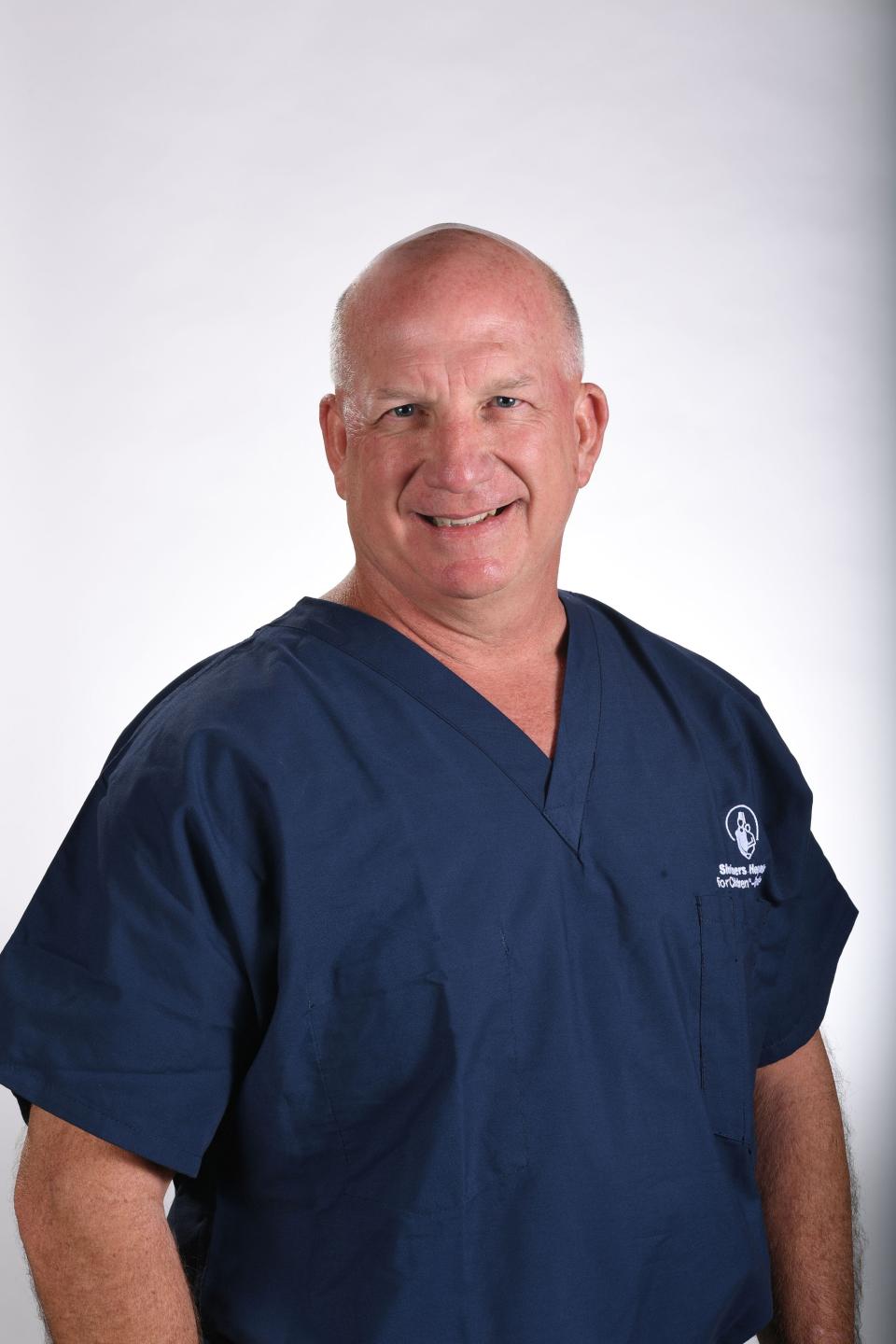New "BEAR" surgical procedure can repair knee injuries
Sarah Stewart knows that patience is an important part of being an athlete, but this year has brought new ways to put that into practice. The 14-year-old Upstate resident is an honor student and a high level gymnast. She is also the first pediatric patient in the Upstate to undergo a new procedure to repair a knee injury, a torn ACL (anterior cruciate ligament).
Sarah injured her knee during a competition in February.
“In the middle of our routine, I went to do my first tumbling pass, which is a connection pass, so it has two flips in it that are connected,” Sarah said. “And whenever I went to connect those two flips, I felt my knee kind of dislocate, but then come back in. When I landed on it, it started hurting and I knew something was wrong. I had to end the routine short, and then call the medical person.”
Though initial exams indicated that Sarah’s ACL was not torn, an MRI about three weeks after the injury confirmed the diagnosis. Sarah’s father, Rick Stewart, said Whitney Gibson, an orthopedic surgeon at Shriners Children’s Greenville, introduced them to the possibility of a new procedure – BEAR surgery – that could help Sarah’s ACL heal itself.
“BEAR stands for bridge-enhanced ACL repair,” Gibson said. “We’re trying to repair the ends of a torn ACL without using another tendon, whether it’s your own or someone else’s, to repair or reconstruct the ACL.”
Until recently, that was impossible.
“We never had a way to allow the ACL ends to heal because the synovial fluid flow would not allow them to heal,” Gibson said.
The new procedure uses a sponge-like bridge that is absorbed over 6 – 8 weeks as the tendon heals.

“You put it right where the ACL ends have been pulled together through suture material and this allows a clot to be formed,” Gibson said.
The surgery itself takes a couple of hours and is done on an outpatient basis. Gibson said patients know in advance that if there isn’t enough ligament left to do the procedure, they will proceed with a traditional ACL reconstruction.
“To me, it looked fantastic because it's the only procedure that really heals your body's ligament back, as opposed to having artificial or other materials in your body,” Sarah’s father said. “Over the long haul of your life experience, it looks like it would be far superior. We were pretty excited about it, but there's a lot of time constraints around it. You have to act very quickly and be very aggressive and have confidence, I think, in your doctors and surgeons and the process around you, which we did, of course, with Dr. Gibson and the team there at Shriners.”
Patients must meet specific criteria to be eligible BEAR surgery, including being at least 14 years old, being within 50 – 70 days of injury and having enough remaining ACL to connect to the bridge. Though the length of torn ligament can be seen on an MRI, the surgeon can’t be certain until the arthroscopic surgery begins.
“There are options now,” Gibson said. “You don’t have to do an ACL reconstruction as long as you meet that criteria.”
One of the benefits of the procedure is the faster recovery time when compared to traditional ACL reconstruction.
“It’s just a different scenario (after the surgery), what the patient looks like and the knee as well,” Gibson said.
Sarah had minimal pain and regained range of motion in her knee more rapidly than could be expected with a reconstruction.
Despite the wonderful outcome Sarah experienced, gymnastics will have to wait a bit. Gibson said young athletes have a high rate of reinjury if they return to their sport too quickly, so the typical timeframe is 9 – 12 months of healing. Patients have a strength test and neuromuscular testing before being cleared to return. If needed, a sports psychologist can work with them to help them mentally prepare for resuming competition as well.
Until she is ready to get back to her sport, Sarah is doing physical therapy and not letting the injury slow her down.
“Two weeks to the day after surgery, she attended her school dance, wearing high heels, dress, and her knee brace – no crutches,” Rick Stewart said.
In 2022, Shriners Children’s Greenville saw children from 35 states and 14 countries. Services are provided without regard to a family’s ability to pay. Learn more at shrinerschildrens.org/locations/greenville.
This article originally appeared on Greenville News: New "BEAR" surgical procedure can repair knee injuries

